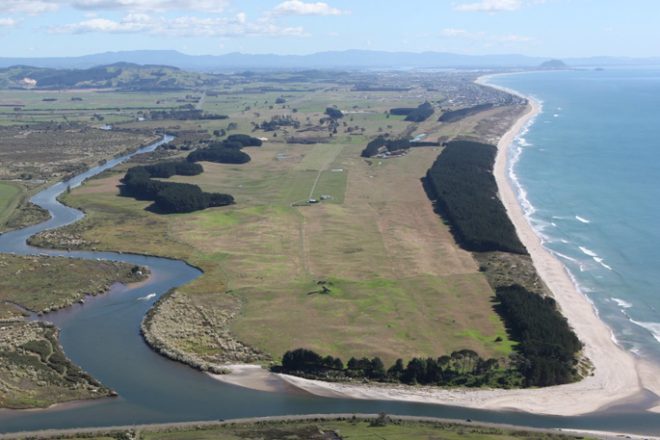The city council in Tauranga may struggle to find the necessary funds for new roads intended to facilitate housing development in the eastern part of the city. The roads are crucial for the Te Tumu area, expected to accommodate 15,500 residents once finished. The development requires two major transport routes, estimated to cost around $400 million, extending The Boulevard and Te Okuroa Drive in Pāpāmoa. If the council cannot secure the required funding, it could potentially increase the cost of each new house by $27,000.
City planning and growth manager, Andy Mead, explained that the council began planning for the roads four years ago. However, the funding policy of NZ Transport Agency Waka Kotahi for arterial roads in new development areas has since changed significantly. The agency used to cover half the cost, but now they either don’t fund these roads or only contribute a small portion.
Mead stated that they are currently seeking approval, not funding, for the Te Tumu roads as there is no confirmed timeline for the development. Housing in Te Tumu is not expected to be available until 2040, considering the time needed for land development and civil works.
The council’s preferred design for The Boulevard includes two dedicated bus lanes and two for general traffic, while Te Okuroa Drive would be a four-lane road with a dual cycleway on one side and a shared path on the other. These would be ‘limited access roads’, with no driveways leading off them, but intersections with local roads.
If the council only receives a 10% subsidy of $40 million, instead of half, the remaining funds would need to be sourced elsewhere. If external funding can’t be found, developers would have to cover the costs, potentially increasing the price of the 6,000 Te Tumu homes by an additional $27,000 each.
Jess Andrew, NZTA Bay of Plenty and Waikato regional manager system design, clarified that the National Land Transport Fund does not contribute to growth costs where a private developer is the main beneficiary. Public investment should be targeted towards delivering public benefit, and growth costs should be covered by local councils and developers. However, any works that provide a “broader public benefit” would be eligible for funding. The business case will be submitted to NZTA for approval of the preferred options for the Te Tumu transport routes.





























































